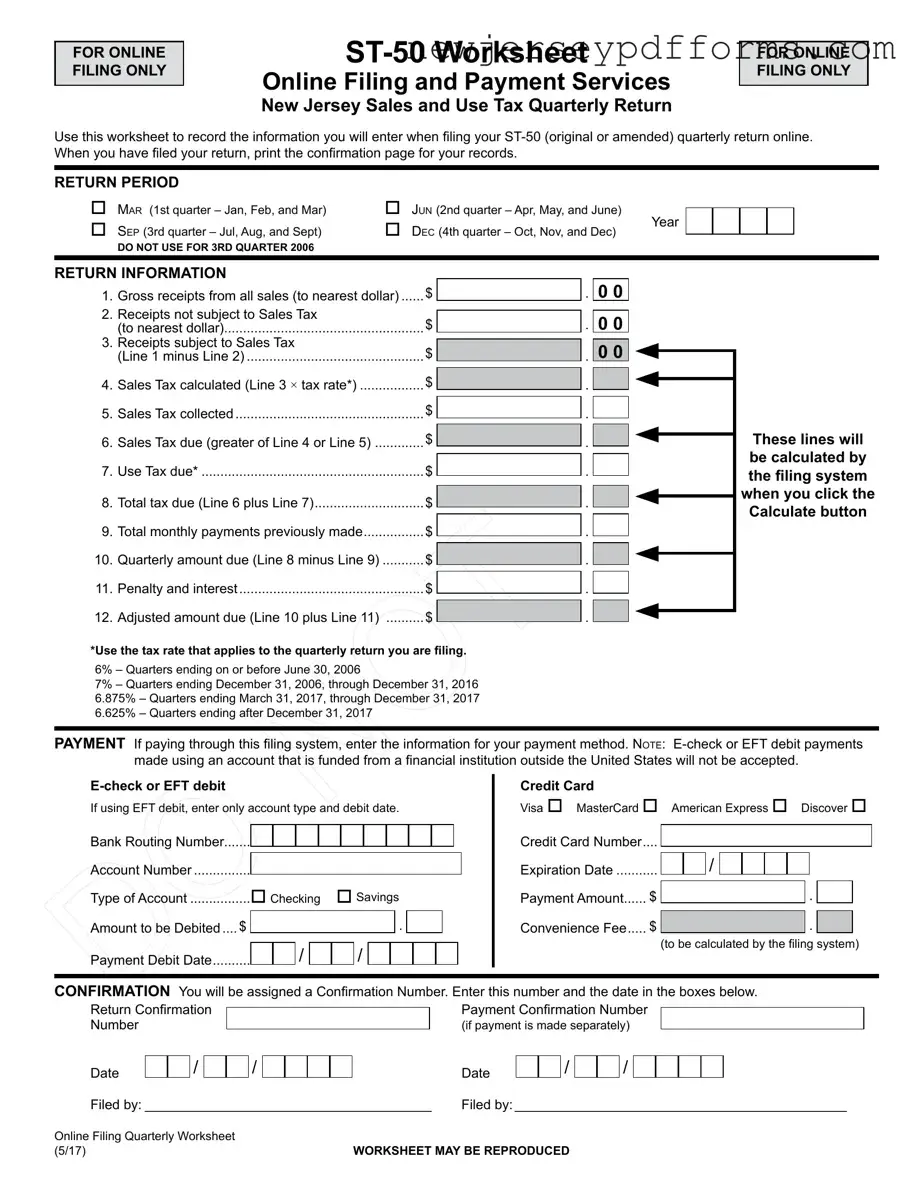What is the NJ Sales Tax ST-50 form used for?
The NJ Sales Tax ST-50 form is a quarterly return used to report sales and use tax collected by businesses in New Jersey. It allows businesses to calculate the total tax due based on their gross receipts and to submit payments online. This form ensures compliance with state tax regulations.
How do I determine the tax rate to use on the ST-50 form?
The tax rate varies depending on the period you are filing for. For quarters ending on or before June 30, 2006, the rate is 6%. From December 31, 2006, through December 31, 2016, it is 7%. For quarters ending March 31, 2017, through December 31, 2017, the rate is 6.875%. After December 31, 2017, the rate is 6.625%. Always check the specific rate that applies to your filing period.
What information do I need to complete the ST-50 form?
You will need to provide details such as gross receipts from all sales, receipts not subject to sales tax, and the amount of sales tax collected. Additionally, you must calculate the total tax due, including any penalties or interest, and indicate any payments made previously. Accurate record-keeping is essential for this process.
Can I file the ST-50 form online?
Yes, the ST-50 form is designed for online filing only. You can enter your information directly into the online system, which will calculate the necessary lines for you. After submission, it is crucial to print the confirmation page for your records.
What payment methods are accepted for the ST-50 form?
You can pay via e-check, EFT debit, or credit card when filing online. However, note that e-check or EFT debit payments must come from a financial institution within the United States. If using a credit card, you can choose from Visa, MasterCard, American Express, or Discover.
What should I do if I encounter issues while filing the ST-50 form?
If you face any issues while filing, first check the online help resources provided by the New Jersey Division of Taxation. You can also contact their customer service for assistance. Keeping your records organized and ensuring you have all necessary information before starting the filing process can help minimize problems.
